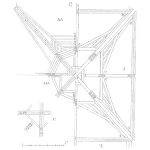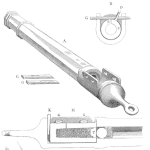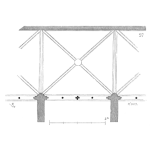
PREVENTIVE MAINTENANCE STRATEGY IN A PLANT WELLNESS WAY EAM SYSTEM-OF-RELIABILITY
IN A PWW EAM SYSTEM-OF-RELIABILITY, PREVENTIVE MAINTENANCE STRATEGY IS TO REPLACE PARTS WHEN EXCESSIVE STRESS BUILD-UPS IN THEIR MICRO-STRUCTURE
Your Reliability Engineering Professional Development Site
by Mike Sondalini Leave a Comment

PREVENTIVE MAINTENANCE STRATEGY IN A PLANT WELLNESS WAY EAM SYSTEM-OF-RELIABILITY
IN A PWW EAM SYSTEM-OF-RELIABILITY, PREVENTIVE MAINTENANCE STRATEGY IS TO REPLACE PARTS WHEN EXCESSIVE STRESS BUILD-UPS IN THEIR MICRO-STRUCTURE
by Greg Hutchins Leave a Comment

Organisations use different management systems to provide the required foundation to direct and control their activities to achieve their objectives.
When the organisational structure is complex, the organisation needs to develop a robust, practical, yet simplified, integrated management system. This strategy-focused integrated management system will fully integrate all relevant management practices and common touchpoints of the business into one coherent and synchronised management system. In doing so, it enables and drives the achievement of its corporate strategy and improve or drives performance.
[Read more…]by Ray Harkins Leave a Comment

With all the buzz these days about design thinking, some of you may be wondering what it’s all about. How does it relate to design? And what can non-designers gain from it?
Design thinking is far more than simply designing products and services—it’s an approach to problem-solving that can be applied to an incredibly wide range of applications.
[Read more…]by Sanjeev Saraf Leave a Comment

BLEVE stands for Boiling Liquid Expanding Vapor Explosion
If a tank containing liquid is subjected to external fire, the heat from the fire lead to boiling of the liquid. This in turn leads to increased pressure in the tank. This “boiling” liquid and “expanding” vapor may increase the pressure significantly and cause the tank to rupture. If the released liquid is flammable , it can catch on fire resulting in a fire and explosion.
[Read more…]by Michael Pfeifer, Ph.D., P.E. Leave a Comment

Fatigue cracks that originate at inclusions. Stainless steel intergranular corrosion due to chromium carbide precipitates. Low steel toughness because martensite not tempered enough. Low aluminum strength because of excessive grain boundary precipitation. Orange peel due to large grains.
These are examples of how problems with a metal’s microstructure lead to reliability and performance problems. Of course, there are thousands of examples of microstructures that lead to good reliability and good performance.
One hurdle to understanding metallurgy is being able to think small – very small. Less than a millimeter. Less than a micron. And sometimes on the scale of atoms.
[Read more…]by Greg Hutchins Leave a Comment

Paul Gladieux has over 45 years of experience working in the quality profession. In 1991, he founded Global Quality Management Advisors (GQM Advisors). The group provides quality-related services focused on management system design, development, compliance, and certification in a wide range of sectors. His clients in the energy sector include companies such as: NuScale Power LLC, BWX Technologies, Westinghouse Nuclear AP1000 Program, Terra Power LLC, Worley Energy | Chemicals, U.S. Department of Energy, Westinghouse Nuclear, Vigor Industrials LLC, and Alyeska Pipeline Service Company.
[Read more…]by Mike Sondalini Leave a Comment

Welcome to Day 2 of the Maintenance Planning and Scheduling for World Class Reliability and Maintenance Performance 3-Day Training Course. I hope that you enjoyed Day 1 and found the maintenance and reliability concepts it contained useful.
[Read more…]
I know. I’m a lady. But it’s not my expression. That’s what my mentor, John Moubray, called it.
And he didn’t apologize for it when he used exactly that term during a one-on-one mentoring session with me.
And to this day, it’s one of the most valuable (and profitable) lessons he ever taught me.
In fact, it helped me win $1,428 in a poker tournament.
[Read more…]
Which of these six failure rate functions do your products and their service parts have? You don’t know? You don’t have field reliability lifetime data by product name or part serial number? That’s OK. Lifetime data are not required to estimate and classify failure-rate functions, including attrition and retirement. GAAP requires statistically sufficient field reliability data to classify failure rate functions for RCM.
[Read more…]by Bryan Christiansen Leave a Comment
Production processes come to a grinding halt when equipment breaks down. This results in production delays, costs incurred to fix the machine, and opportunity costs. The production process cannot proceed until the maintenance activity on the faulty machine is complete — unless you have provisioned equipment redundancy. [Read more…]
by Sanjeev Saraf Leave a Comment

Inherently safer philosophy represents a slightly different approach to risk mitigation. Instead of focusing on mitigating risks, an inherently safer alternative focuses on eliminating the hazards.Let us look at couple of inherently safer examples.
[Read more…]by Robert (Bob) J. Latino Leave a Comment

Have you ever noticed how much emphasis is put on the maintenance budget in an industrial facility? While maintenance cost is usually just a fraction of what is spent on other costs like raw materials, energy costs and other input costs, it get 95% of the attention. This is because many think that every dollar spent on maintenance is a wasted dollar. With this attitude, it causes those at the plant level to make extremely difficult decisions of cost versus risk. The lower the budget, the more risk has to be taken.
[Read more…]by Mike Sondalini Leave a Comment

Use an Isocorrosion Diagrams To Recognise High Corrosion Situations And Design Process Equipment Accordingly. A true story of how a high nickel alloy (Alloy 28) reactor was holed in 8 weeks by sulphuric (sulfuric) acid running down the inside wall. When the situation was reviewed in detail using an iso-corrosion diagram for the alloy in sulphuric acid it was obvious that such a problem would occur. The iso-corrosion curves clearly showed the huge corrosion rates that would happen at local contact points within the reactor. A clear and detailed understanding of how to use iso-corrosion curves would have highlighted the problem at the design stage.
[Read more…]
Iterative software development approaches have been around since the 1950s but many mark the beginning of what is commonly thought of as Agile as the creation of the Agile Manifesto, a document written by a number of software engineers in 2001, which contains 12 principles that serve as guidelines to how software projects should be conducted. Since then, professional services and product organizations have taken Agile and bent and twisted it into proprietary commercial forms for their own gain.
[Read more…]by George Williams Leave a Comment

Maintenance, failures, design for reliability, use of RCM and predictive technologies explained in infographic. Leave some feedback so we can make it better.
[Read more…] Ask a question or send along a comment.
Please login to view and use the contact form.
Ask a question or send along a comment.
Please login to view and use the contact form.